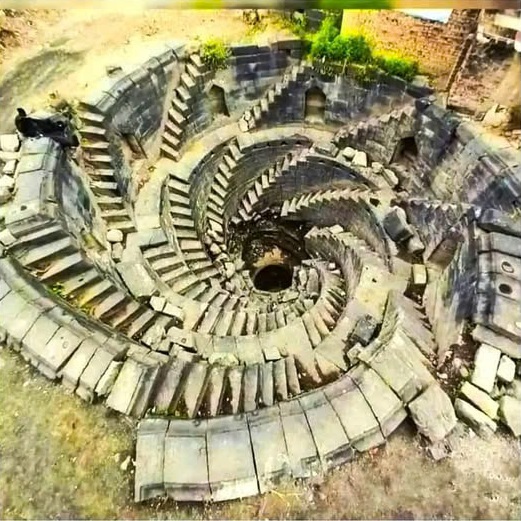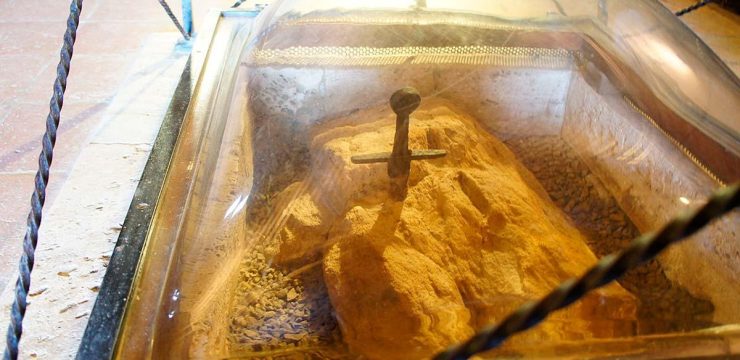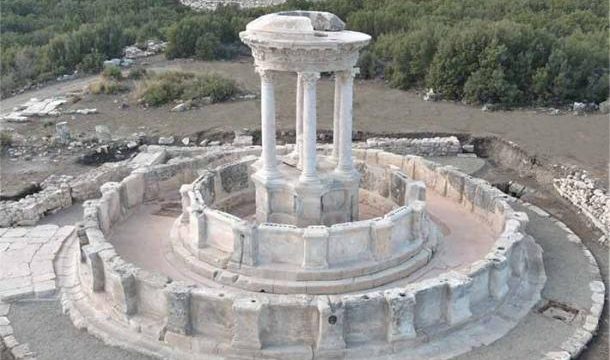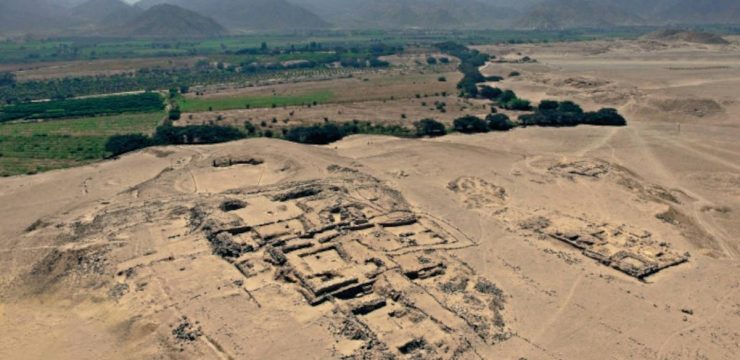Deep in the Parbhani District of Maharashtra, within the quiet bounds of Selu Taluka, lies one of India’s most astonishing yet lesser-known architectural treasures—the Helical Stepwell of Walur. Estimated to have been built between 1,000 to 1,500 years ago, this stepwell is not simply a functional reservoir for water. It is a silent storyteller, whispering tales of ancient ingenuity, spiritual life, and the deeply rooted connection between architecture and community. In a time when modern conveniences were unheard of, this structure stands as a stunning example of how our ancestors harmonized practical needs with beauty, spirituality, and engineering brilliance.

At first glance, the Helical Stepwell appears like a forgotten relic, but closer inspection reveals an extraordinary level of design. Unlike most traditional stepwells that consist of straight staircases leading down to water, the Walur stepwell presents an awe-inspiring helical or spiral formation. It features eight gracefully interconnected stairways that wind around the structure like the coils of a shell. As you descend, step by step, the design guides you not just downward but backward through time. The deeper you go, the more you’re drawn into an architectural experience that evokes both reverence and curiosity. Each turn opens up a new angle, a fresh line of sight, and a deeper appreciation for the artistry that defines the stepwell. This isn’t merely about getting to the water—it’s about embarking on a historical and spiritual journey, one twist at a time.
Beyond its captivating form, the Walur stepwell reveals its purpose in layers that go far beyond the physical. At the intersection of architecture and spirituality, eight intricately placed Devakoshta niches can be found embedded within the walls. These alcoves, though now largely empty, were likely once home to sacred statues, religious motifs, or detailed carvings that paid homage to the gods and goddesses of the time. Their presence indicates that this space wasn’t just a utilitarian pit for water—it was sacred. It served as a confluence of spiritual practices and daily necessities, where villagers could fetch water, conduct rituals, and find a moment of peace in a cool, shaded sanctuary carved from stone. In this way, the stepwell becomes a temple of sorts—one that honors both the divine and the life-giving essence of water.
Functionally, the Walur stepwell was a brilliant solution to a pressing need. The region it resides in is prone to water scarcity, particularly during the hot and unforgiving dry seasons. To adapt, the creators of this stepwell designed a structure that allowed for gradual access to groundwater as its levels fluctuated throughout the year. The spiral layout wasn’t just aesthetically captivating—it also helped in stabilizing the descent, reducing the risk of accidents, and ensuring that water could be retrieved from various depths. More importantly, this stepwell became the lifeblood of the community. It wasn’t just a utility; it was a gathering place. Here, stories were shared, children played in the shade, women sang folk songs as they carried pots of water, and elders passed down oral histories to younger generations. The stepwell functioned as an open-air community center, alive with the rhythm of everyday life.
In recent years, a powerful wave of local initiative has sparked efforts to restore and preserve this forgotten gem. The people of the village, driven by pride and a desire to connect with their heritage, began clearing out centuries of debris and overgrowth. What they uncovered was nothing short of awe-inspiring. With every sweep of the broom and every bucket of rubble removed, the original grandeur of the Helical Stepwell reemerged—its contours sharper, its steps walkable once more, its story louder than ever. These acts of preservation are not just about aesthetics; they are acts of cultural revival. They ensure that this ancient structure is not relegated to mere memory or obscurity but instead given its rightful place among India’s celebrated architectural wonders such as Rani-ki-Vav in Gujarat or Agrasen Ki Baoli in Delhi.
The rediscovery and rejuvenation of the Walur stepwell serve as a potent reminder of what lies hidden in plain sight. While we often marvel at monuments showcased in textbooks and travel brochures, it is places like this—lesser-known yet equally profound—that enrich our understanding of history. The Helical Stepwell of Walur teaches us that sophistication in design doesn’t always require modern tools. Sometimes, it takes nothing more than human ingenuity, patience, and a deep respect for the environment. The fact that this structure still stands, despite centuries of neglect, is a testament to the resilience and craftsmanship of its creators.
This stepwell is not simply an object of admiration; it is a living record of a civilization that understood how to turn necessity into artistry. It reflects a time when engineers, artists, and spiritual leaders worked hand in hand—not for fame or wealth, but for the betterment of their community. In its winding stairs and weathered stones, the Walur stepwell offers a rare, tactile connection to the past. It reminds us that our ancestors were more than mere survivors of difficult times. They were visionaries who could carve beauty into the earth, who could turn a simple need for water into a meditative experience, and who could create structures that would speak across millennia.
Today, as tourists, historians, and local enthusiasts begin to take notice, the Helical Stepwell of Walur is finding its voice again. It now has the opportunity to inspire not just admiration, but also action—to educate, to provoke curiosity, and to stir the desire for preservation in the hearts of future generations. In celebrating the stepwell, we celebrate more than an architectural achievement. We honor a philosophy of life where form and function, spirit and structure, utility and art were never separate—but always united.
In a world that often chases modernity at the expense of tradition, the Helical Stepwell of Walur stands as a stone-bound reminder of a time when our ancestors lived in harmony with nature, respected resources, and found sacredness in everyday life. It is up to us now to listen, learn, and ensure that such wisdom is never forgotten.





